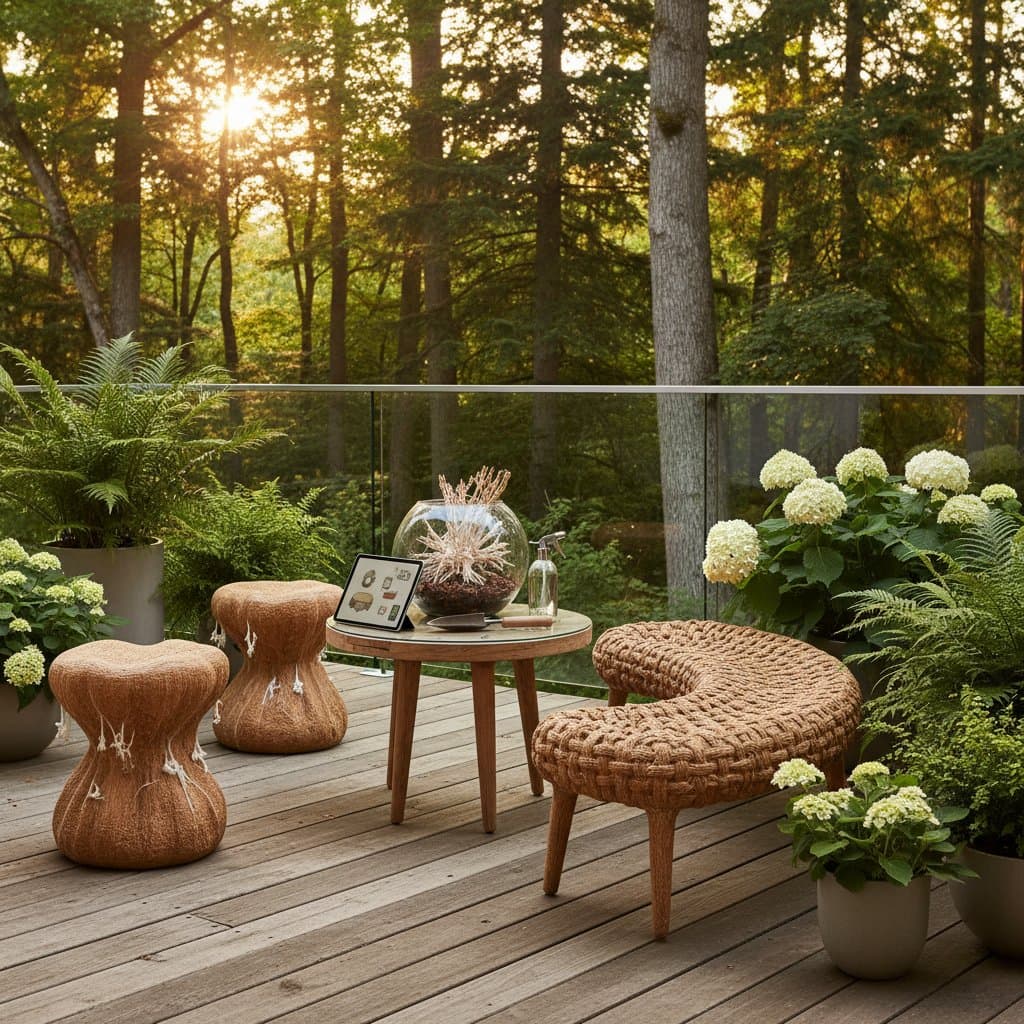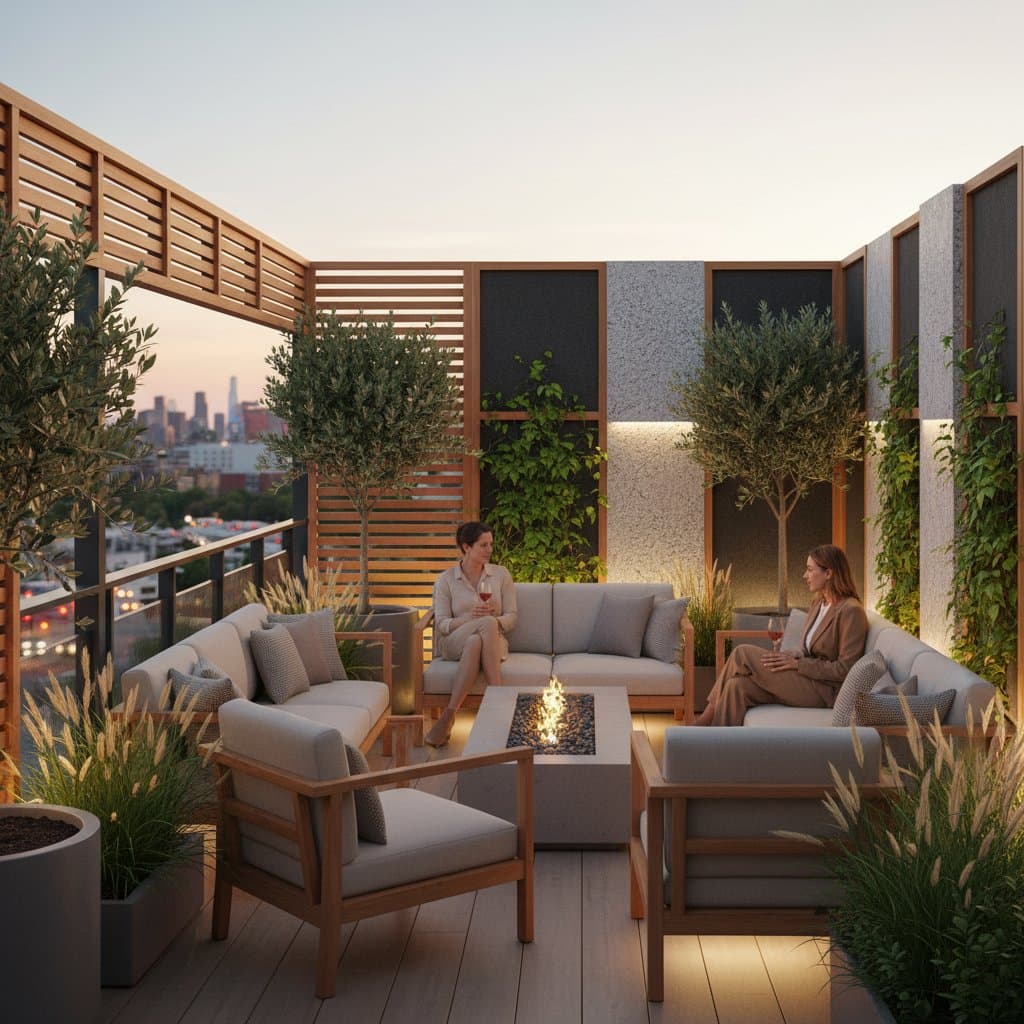4. Dry and Cure the Mycelium Form
Observe the mycelium as it fully colonizes the substrate; the surface will develop a uniform white appearance. At this stage, gently extract the form from the mold to avoid damaging the structure. Preheat a conventional oven to 180 degrees Fahrenheit (82 degrees Celsius) and place the piece inside for precisely three hours. This controlled heating terminates fungal activity and reinforces the material's integrity. Permit the form to cool gradually to ambient temperature before proceeding to the sealing phase, ensuring structural stability.
5. Seal and Finish for Durability
Select a natural bio-resin or beeswax product suitable for outdoor exposure. Apply an initial thin layer using a soft brush, covering all exposed surfaces evenly. Allow this coat to cure for a full 24 hours in a well-ventilated area. Follow with a second application to enhance protection against environmental elements such as moisture and ultraviolet radiation. For improved user comfort, attach a removable cushion fabricated from weather-resistant fabric or a simple cotton padding secured with ties.
6. Test Stability and Integrate into Use
Position the completed seating on a level surface to assess its balance and firmness. The mycelium should exhibit a solid, supportive feel under moderate pressure. If necessary, employ fine-grit sandpaper to refine any irregular edges, promoting a smooth tactile experience. Prevent prolonged contact with pooled water, as excess moisture can compromise longevity. During extended periods of inclement weather, relocate the piece to an indoor space to preserve its condition.
Essential Safety Guidelines
Wear protective gloves and a particulate mask when preparing and handling the substrate mixture to minimize exposure to spores and dust. Prior to reusing any molds, disinfect them thoroughly with a solution of white vinegar or isopropyl alcohol, then rinse and dry completely. Monitor the oven closely throughout the curing process; excessive heat may lead to material fractures or emission of fumes. If composting is intended at the end of the furniture's life cycle, avoid synthetic sealants, as they hinder natural decomposition.
Common Challenges and Solutions
Mycelium growth occasionally encounters obstacles that affect the final product. Address them systematically to achieve optimal results.
- Appearance of green or black discoloration: This indicates bacterial or mold contamination. Dispose of the affected batch immediately and sterilize all equipment, work surfaces, and tools before initiating a new attempt.
- Resulting in a soft or deformed shape: Excess moisture retention or insufficient curing duration often causes this issue. Extend the drying period and verify that the oven maintains the correct temperature throughout.
- Development of brittle or fragmented edges: Loose packing of the substrate during molding contributes to weakness. In future projects, compress the mixture more firmly and uniformly into the mold.
- Inconsistent coloration across the surface: Such variations occur naturally and contribute to an organic aesthetic reminiscent of natural stone or cork textures.
To achieve a more consistent appearance, apply a layer of non-toxic mineral-based pigment over the sealed surface once it has fully cured.
Cost Estimates and Timeline
Materials for a compact stool typically range from 25 to 40 dollars, depending on the source of spawn and substrate components. Constructing a full-sized bench, particularly one incorporating a supportive wood frame, may require 70 to 100 dollars. The mycelium spawn represents the primary expense; reduce costs by sourcing it in bulk or reusing molds across multiple projects. Incorporate locally collected, clean cardboard or sawdust as substrate to further minimize outlays.
The growth phase demands approximately 10 days under controlled conditions. Allocate three hours for the baking process and one full day for sealing and drying. With efficient planning, complete the entire project over the course of two weekends, allowing time for each stage to progress without interruption.
Ongoing Care Practices
Maintain the furniture by ensuring surfaces remain dry and clear of accumulated debris. Clean periodically with a lightly dampened cloth, followed by thorough drying. Reapply sealant annually if the piece endures constant outdoor exposure, refreshing the protective barrier against weathering. Steer clear of abrasive or chemical-based cleaners, which can erode the sealant and underlying material.
After several years of service, when the structure begins to soften or show signs of degradation, dismantle it manually and add the components to a compost pile. The mycelium breaks down naturally, enriching soil quality without introducing persistent pollutants like plastics.
For enhanced resilience, secure the mycelium seat to a base constructed from recycled metal or salvaged wood. This elevation prevents direct ground contact and moisture wicking, potentially extending usability by multiple seasons.
Effective Storage Strategies
When the furniture is not in active use, position it beneath a covered porch or within a dry storage shed to shield it from precipitation. Stack stools inverted to facilitate airflow around all surfaces, reducing the risk of condensation buildup. Cover with a breathable cotton sheet rather than impermeable plastic materials, which trap humidity.
In constrained spaces, consider fabricating nesting designs. For instance, create three stools with progressively smaller diameters that fit compactly within one another, reclaiming up to 12 inches of storage area.
Seasonal Maintenance Protocols
As warmer seasons commence, conduct a thorough inspection for any fissures or sealant deterioration. Reapply protective coatings where wear is evident to restore integrity. In preparation for cooler periods, cleanse and fully dry each piece before transitioning it indoors for protection.
Residents in high-humidity regions should incorporate moisture-absorbing agents, such as silica gel packets or compact dehumidifier units, into storage containers. These measures prevent premature softening of the mycelium composite.
Apply similar principles to those used for traditional wood furnishings: ensure adequate ventilation, limit direct exposure to intense sunlight, and handle with care to avoid unnecessary stress on the material.
Engaging Professional Expertise
For ambitious projects involving expansive seating arrangements, such as an outdoor sofa or intricately shaped benches, consult a specialist in mycelium fabrication. Professionals operate in regulated facilities with large-scale equipment, yielding products of superior uniformity and strength. When selecting a service, inquire about key specifications including:
- The composite's density rating, which determines load-bearing capacity.
- The formulation of the outdoor-rated sealant for weather resistance.
- Projected lifespan based on regional climate conditions.
- Availability of composting services or take-back initiatives for retired pieces.
Practical Steps to Begin
Commence with a modest project, such as a single stool, to familiarize yourself with the material's behavior, growth timeline, and finishing techniques. As proficiency develops, scale up to more complex forms while documenting specific mixture ratios and environmental parameters for consistent replication.
Distribute surplus mycelium spawn to local neighbors or community gardening initiatives, fostering collaborative sustainability efforts. Each completed item repurposes waste materials and diminishes reliance on petroleum-based alternatives.
Immediate actions to initiate your project:
- Acquire a beginner mycelium cultivation kit along with a basic mold form to experiment with initial growth.
- Designate and prepare a dedicated incubation area in your kitchen or outbuilding, ensuring it maintains stable temperature and humidity.
- Collect suitable substrate materials, including clean sawdust or shredded cardboard, to prepare for mixing.
Cultivating mycelium seating transforms everyday waste into functional, inviting outdoor elements. Through this practice, individuals actively reduce landfill contributions from synthetic products while integrating natural processes into urban living spaces.






